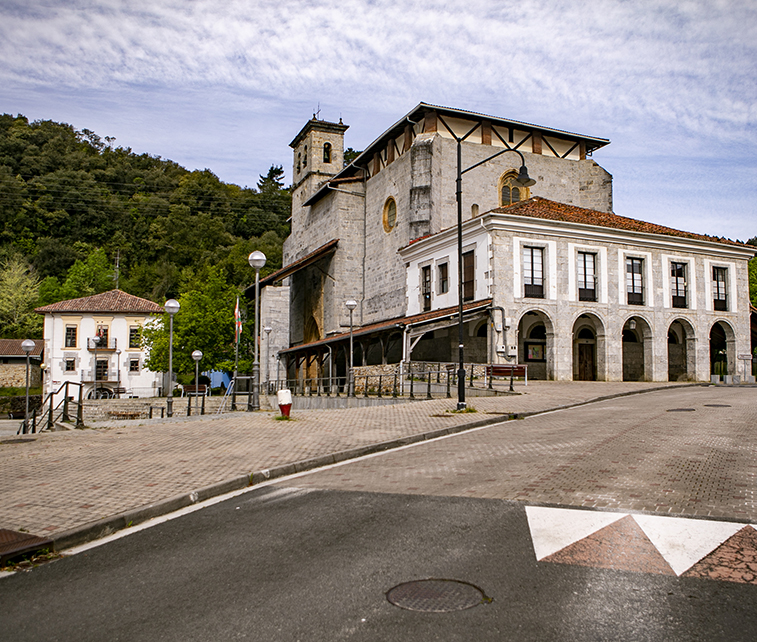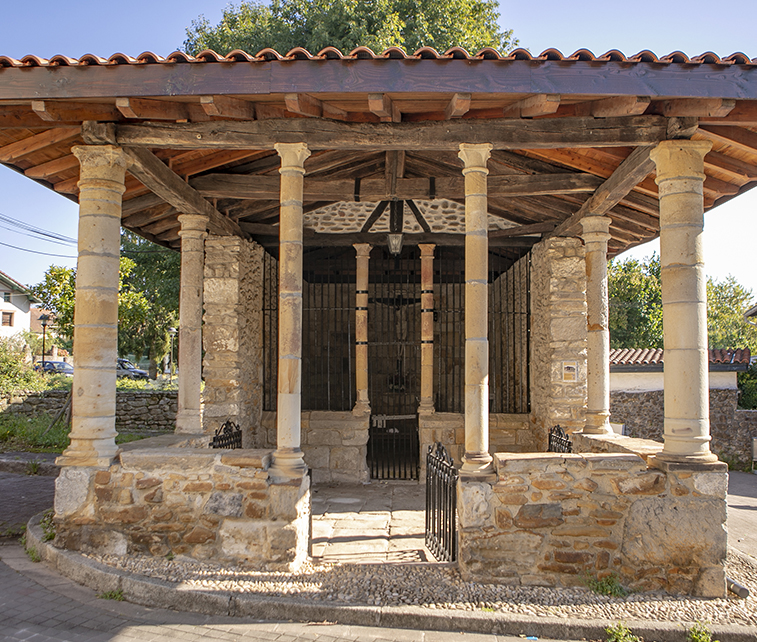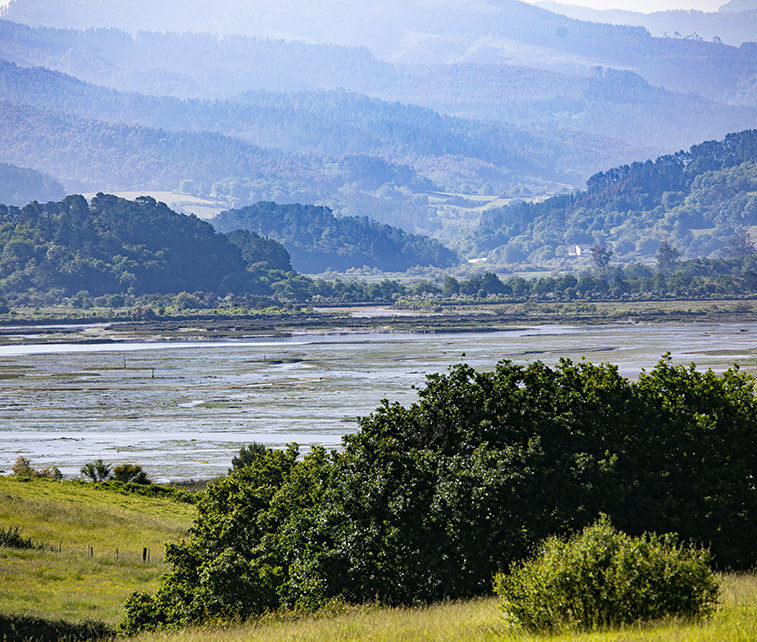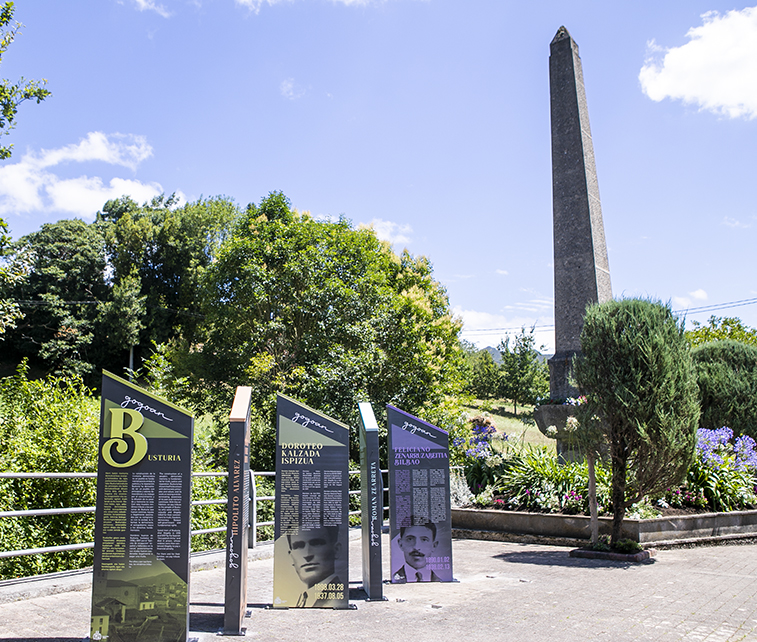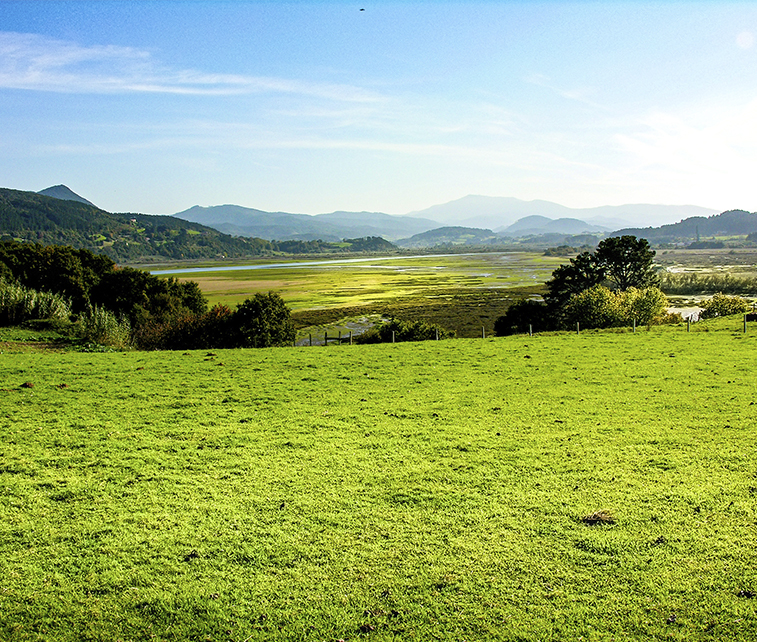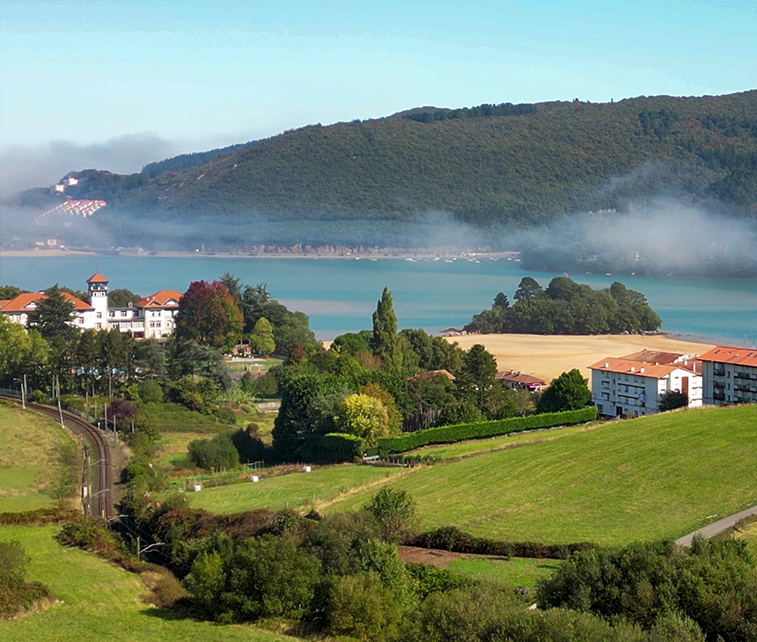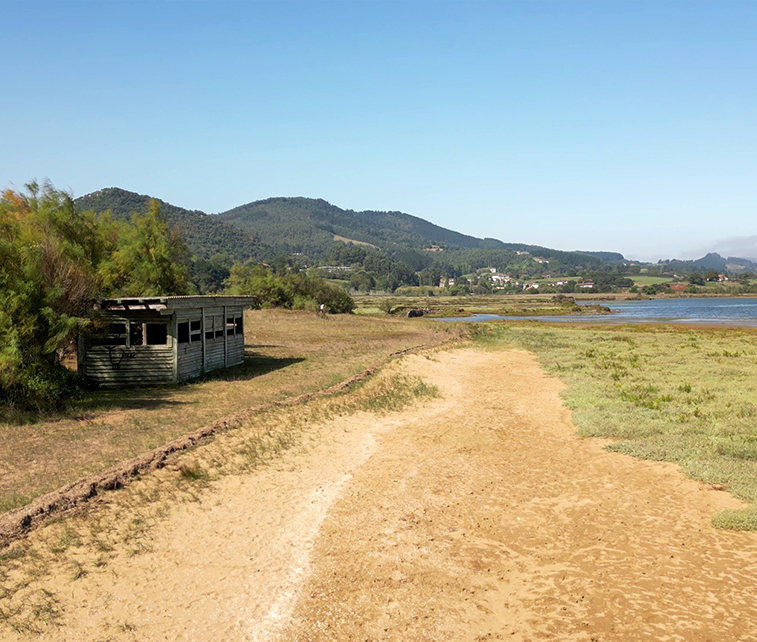HISTORICAL MEMORY
ANJEL LEKUONA
The life of Anjel Lekuona, together with that of so many others who, like him, gave their lives and suffered the barbarity of a war and its consequences, helps us to understand how important memory is. His story is one of suffering and also of humanity, honesty and dignity.
SUFFERING, ASHES, HUMANITY, DIGNITY, AND MEMORY
The rescue
of our history
In memory of Anjel Lekuona, born in Busturia in 1913 and murdered by the SS in Hradištko on April 9, 1945. Thanks to the bravery of Mr. Frantisek Suchy, in charge of the Strasnice civil crematorium in Prague and his son, who identified and preserved the ashes of thousands of prisoners who were victims of Nazi barbarism, we have learned that Anjel's are in urn 62,559 in the existing memorial in Strasnice (Prague).
Thanks also to Gregoire Uranga, from Urrugne, who wrote the letter to the Lekuona family, in which he narrated, in great detail, the sad pilgrimage of this resident of Busturia through the different Nazi concentration camps.
A handwritten
letter, key in the investigation
In 2000, the investigation into Anjel Lekuona began. By extracting data from the letter that Gregoire Uranga, a native of Urruña and companion of Anjel Lekuona in the concentration camp, sent to the Lekuona family in the summer of 1945, it was learned that he fled to France in 1939 and worked as a lumberjack. It is also known that he was arrested in the summer of 1943 somewhere in the Pyrenees, near the Gurs camp (according to a study by the University of Pau, which points out that Anjel Lekuona was working in a lumber company in Arudy, just a few kilometers from this camp).
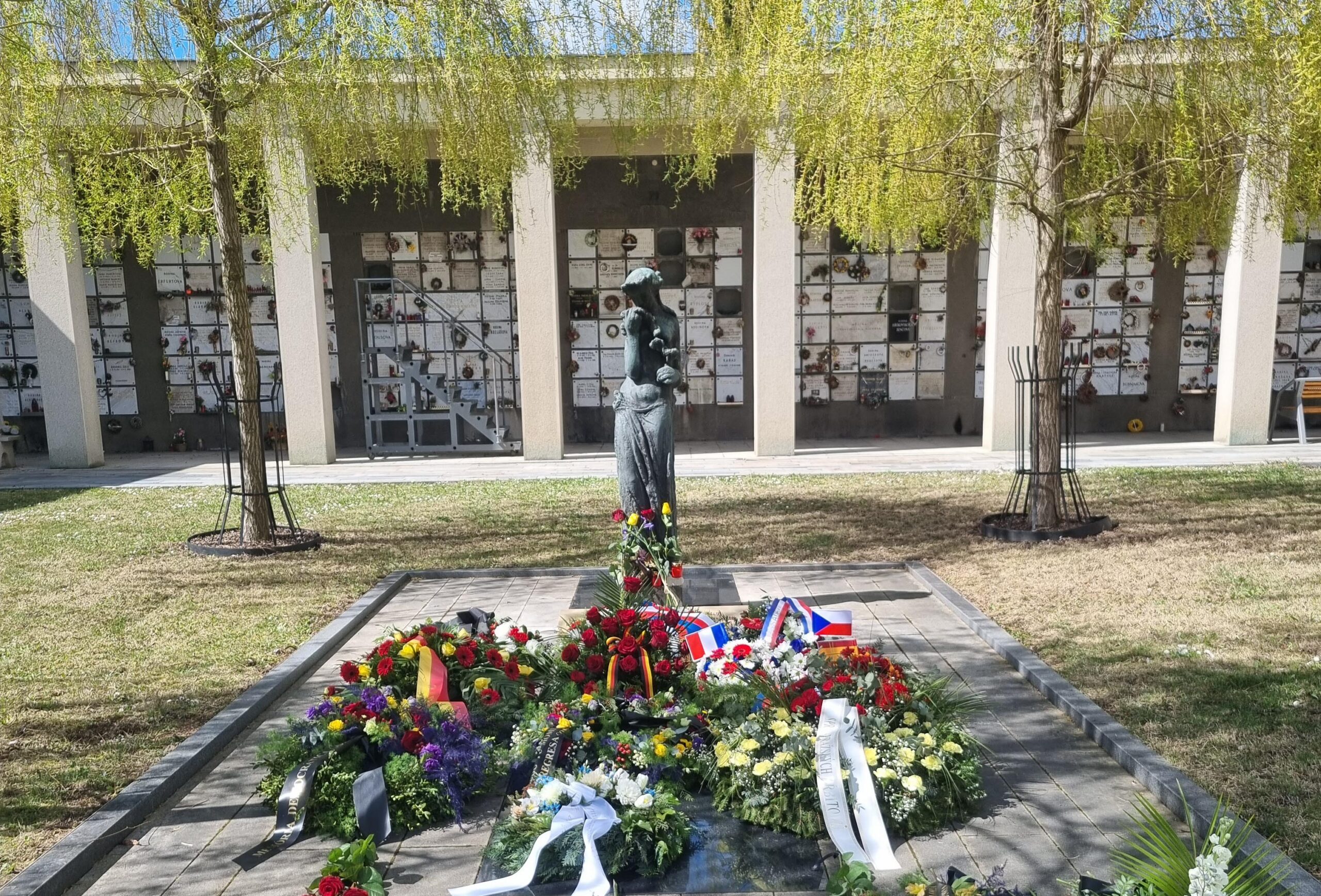
Thanks to consultations in various archives, we have been able to learn more details (dates, documentation on the convoys in which the prisoners were transported, etc.). By tying all these ends together, consulting many archives, and contacting other historians, it has been discovered that the ashes of Anjel Lekuona, along with those of many others executed by the Nazis, rest in the memorial of the Strasnice Crematorium in Prague. Thanks to the courage and decision of the person in charge of this crematorium, Frantisek Suchy, who, disobeying the orders of the SS, documented each of these cremations and kept the ashes in numbered urns, hiding them in a secluded place in the crematorium.
FAMILIES⸻
Search and Gratitude
This unprecedented discovery, made by researcher Unai Egia, led the investigation down a completely unexpected path. The task now was to search for and find the families of these other five individuals. After a painstaking search, relatives of almost all of them were located, with the exception, as of now (2024), of the relatives of Vicente Vila Cuenca.
In addition to locating the families of these individuals, what is important and rewarding is that a group of people has been formed, united by the tragedy that our relatives suffered and whom we have brought out of oblivion.
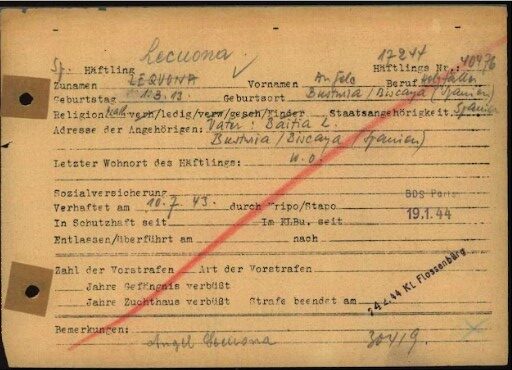
FROM OBLIVION TO MEMORY
Around 9,500 Spaniards passed through one of the Nazi concentration camps: Mauthausen, Buchenwald, Ravensbrück, Dachau, Flossenbürg, etc. Few emerged alive, and the few survivors were forced to remain residing in the French state, most of them, or to emigrate to South America.
ALWAYS GRATEFUL
Thanks to the work of historians like Benito Bermejo, Sandra Checa (who published the Memorial Book in 2006, 61 years after the end of World War II), Josu Chueca with his work on the Gurs camp, and Etxahun Galparsoro with his research on the Basques in Nazi concentration camps, and also thanks to the work of memorialist associations, it has been possible to bring visibility to those who suffered the horrors of the Nazi camps.
Thanks also to the perseverance of the Working Group for the Preservation of the Memory of Deportees from the Nazi Camp of Hradistko. It is necessary to mention several achievements of this group: four Stolperstein have been placed in tribute to Enric Moner Castell, Rafael Moyá Pujol, Antonio Medina García, and Anjel Lekuona Beitia.
Consciousness, Cooperation, and Respect
In April 2022, a tribute was paid to these six individuals at the Strasnice civil crematorium (Prague), a ceremony involving Czech authorities and attended by representatives from Germany, France, Spain, as well as from the Govern de la Generalitat de Catalunya, the Govern of the Illes Balears, and the Gogora Institute. Relatives of these six individuals also traveled to Hradistko, where in a simple ceremony, they planted an oak tree, symbolizing freedom and friendship among the peoples of the world. As a result of this relationship, the towns of Busturia and Hradistko have agreed to sign a twinning agreement, one consequence of which is the placement of this panel.

